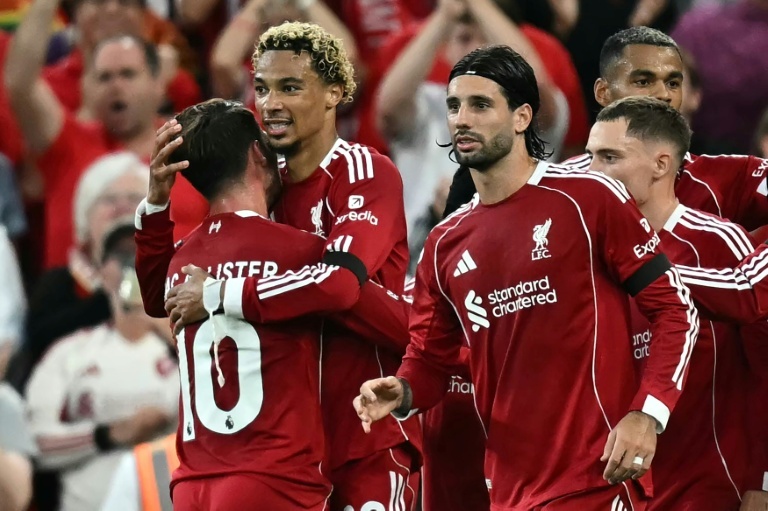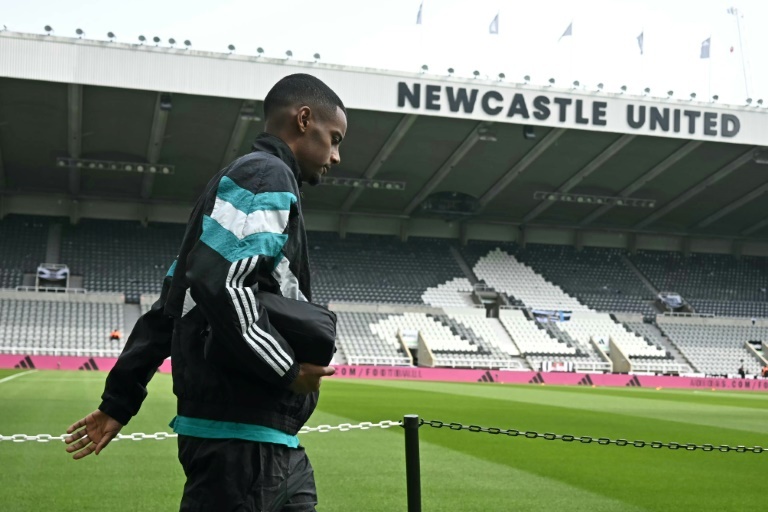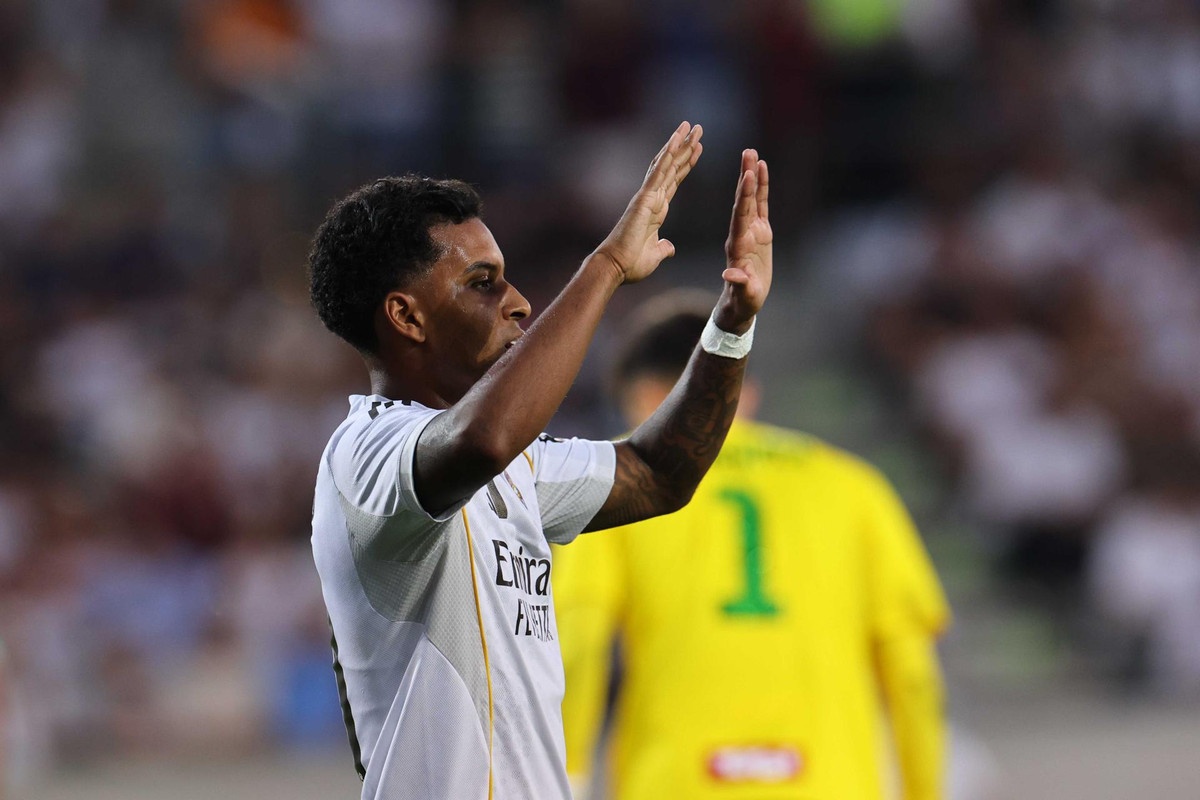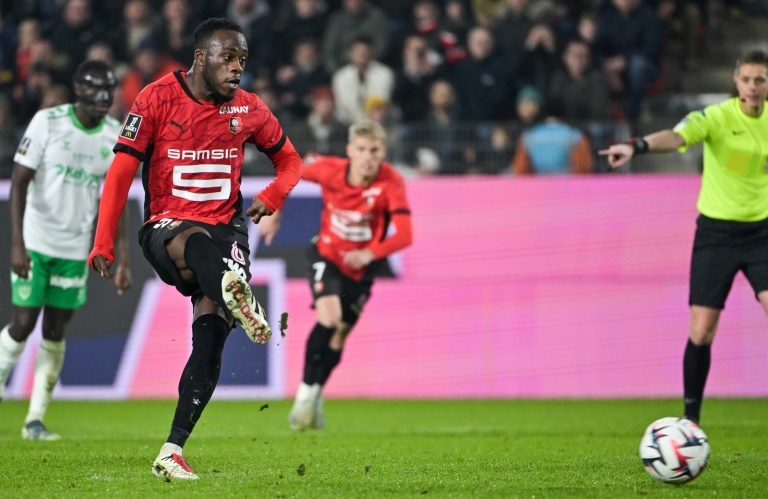The Intersection of Football and Technology: A Deep Dive into the Game-Changing

Football, the beautiful game, has long been steeped in tradition and history, with its essence rooted in the raw skill and passion of players, the unpredictability of the pitch, and the roar of the crowd. However, in recent years, a new player has entered the field – technology.
1 year ago
From the controversial Video Assistant Referee (VAR) decisions to the integration of wearable technology for players, the landscape of football is undergoing a profound transformation.
In this blog, we embark on a journey to explore the intricate relationship between football and technology, dissecting how these advancements are reshaping the sport as we know it. Join us as we delve into the impact of VAR on match officiating, unravel the mysteries behind wearable technology used by players, and ponder the broader implications of these innovations on the game. Are these technological advancements enhancing the sport or diluting its essence? How are fans and players responding to these changes?
As we navigate through the evolving landscape where tradition meets technology, we'll scrutinize the impact on gameplay, strategy, and the overall fan experience. Buckle up as we investigate the controversies, challenges, and the future of football in an era where every move on the pitch is scrutinized by cameras, and players are equipped with cutting-edge wearable devices. The intersection of football and technology is not just a story of innovation; it's a narrative that shapes the very fabric of the sport we hold dear. Let's kick off this exploration into the fascinating world where the thrill of the game meets the precision of technology.
VAR operates as an additional layer of scrutiny, utilizing video footage to review key incidents during the best Bitcoin casinos. This includes goals, penalty decisions, red card incidents, and cases of mistaken identity. The system involves a team of video officials who analyze multiple camera angles to ensure a more accurate and fair decision-making process.
VAR aims to rectify errors that may have been overlooked by on-field referees, providing a safety net for critical decisions that can shape the outcome of a match. Its implementation represents an ambitious step towards minimizing human error and upholding the integrity of the game.
The adoption of VAR has not been uniform across all football leagues, leading to a diverse landscape of opinions and experiences. Some leagues embraced VAR early, integrating it seamlessly into their matches, while others approached its implementation with caution.
The Premier League, La Liga, Serie A, and Bundesliga are among the major leagues that have fully embraced VAR, using it to varying degrees of success. The journey of VAR's integration has been characterized by a series of adjustments and fine-tuning, as leagues grapple with the balance between technology and the human element of refereeing.
VAR's impact on officiating is undeniable, but it hasn't been without its share of controversies. While the technology strives for accuracy, it has been the epicenter of heated debates and contentious decisions. The delay caused by VAR reviews, often leading to prolonged breaks in play, has been a point of contention among fans, players, and even managers.
Controversial VAR decisions, particularly those involving the interpretation of subjective incidents, have sparked debates about the consistency and application of the technology. The nuanced nature of football, where decisions often involve a degree of subjectivity, has raised questions about whether VAR is a panacea or an additional layer of complexity.
The reception of VAR among fans and players has been a mix of frustration, acceptance, and skepticism. Fans, accustomed to the spontaneity of emotional highs and lows in football, have found the stoppages for VAR reviews disruptive to the flow of the game. The jubilation of a goal celebration can be abruptly tempered by the uncertainty of a pending VAR decision.
Players, too, have grappled with the impact of VAR on their performances. The psychological toll of waiting for VAR decisions, coupled with the scrutiny on every action, has added a new layer of pressure on the field. Interviews and social media often serve as platforms for players to express their opinions on the technology, with some embracing it as a tool for justice and others bemoaning its interference in the game they love.
Wearable technology has ushered in a new era for footballers, transcending the conventional boundaries of training and performance analysis. These cutting-edge devices, seamlessly integrated into the fabric of the sport, provide a wealth of real-time data that empowers players, coaches, and sports scientists alike.
From tracking physiological metrics to analyzing movement patterns, wearable technology offers a comprehensive understanding of a player's physical condition and performance on the field. This revolution in data-driven insights has redefined the landscape of football, transforming it from artful gambling sites not on GamStop to a science-driven pursuit of excellence.
Football players today are adorned with an array of sophisticated wearable devices, each meticulously designed to extract a trove of data and insights. Among these, GPS trackers stand as discreet sentinels beneath jerseys, monitoring player movement, distances covered, and sprinting speeds during both training sessions and matches. Smart boots, equipped with accelerometers and gyroscopes, offer a nuanced understanding of a player's movements, including changes in direction and acceleration.
Heart rate monitors and smart vests delve into the physiological realm, recording the intricate dance of a player's cardiovascular responses. These devices become conduits of information, offering a real-time glimpse into exertion levels and cardiovascular health. The data, in turn, shapes training regimens, enabling coaches and fitness staff to tailor workouts with unprecedented precision.
Beyond the physical realm, other wearables tap into the cognitive and emotional dimensions of player performance. Neurotechnology devices, for instance, delve into the intricate interplay between the mind and body, unlocking new avenues for enhancing mental resilience and decision-making on the field.
In this intricate symphony of wearables, footballers don a technological ensemble that transcends the conventional boundaries of training and performance analysis. From the subtle integration of GPS trackers to the sophisticated metrics derived from smart boots and neurotechnology, each wearable device serves as a testament to the relentless pursuit of excellence in the modern game.
The integration of wearable technology has transformed the training regimens of footballers, ushering in an era of precision and individualization. Coaches and fitness staff can tailor training programs based on real-time data, identifying areas for improvement and mitigating injury risks. This personalized approach optimizes player development, ensuring that training sessions align with individual needs and recovery capacities.
Performance analysis has undergone a revolution with wearable technology, providing coaches with a granular understanding of player contributions during matches. Tactical decisions, substitutions, and strategic adaptations are informed by a wealth of data, fostering a more informed and strategic approach to the beautiful game.
One of the most significant contributions of wearable technology to football lies in its potential to enhance injury prevention and safeguard player health. By continuously monitoring biomechanical markers and physiological responses, these devices empower medical staff to detect early signs of fatigue, overexertion, or potential injury risks.
The ability to preemptively address issues before they escalate has the potential to extend players' careers and minimize the impact of injuries on team performance. Moreover, the data-driven insights from wearable technology facilitate the development of targeted rehabilitation programs, ensuring that players return to the pitch in optimal condition after recovering from injuries.
The integration of VAR and wearable technology has undeniably left an indelible mark on the landscape of football, ushering the sport into a new era defined by precision, accountability, and data-driven decision-making. The symbiotic relationship between these technological advancements and the beautiful game has sparked a multifaceted transformation, impacting various facets of football.
While VAR strives to rectify officiating errors and bring about fairness, wearable technology has redefined player preparation, performance analysis, and injury prevention. Together, they've reshaped the dynamics of the sport, prompting a paradigm shift in how football is played, officiated, and experienced.
The infusion of technology into football has catalyzed a metamorphosis in the best casino not on GamStop gameplay strategies and tactics. Coaches, armed with real-time data gleaned from wearable technology, can craft strategies that exploit opponents' weaknesses and optimize their own team's strengths. Tactical decisions are no longer solely based on intuition and experience; they are informed by a trove of statistical insights that illuminate player movements, work rates, and decision-making patterns.
The traditional emphasis on flair and intuition has, to some extent, given way to a more analytical and strategic approach. Teams now deploy tactical nuances with surgical precision, adapting strategies on the fly based on the granular data at their disposal. This shift has not only elevated the intellectual aspect of the game but has also spurred a renaissance in coaching methodologies.
The advent of technology in football has brought forth an era of unprecedented statistical analysis. Every pass, shot, sprint, and defensive move is meticulously recorded, providing a treasure trove of data for analysts and enthusiasts alike. Statistical models and algorithms, fueled by the data from VAR and wearable technology, offer insights into team dynamics, player performance, and the likelihood of match outcomes.
This statistical revolution has not only enriched the understanding of the game but has also influenced pre-match predictions and in-game decision-making. The correlation between possession statistics, successful passes, and goals scored has become more nuanced, enabling teams to tailor their strategies to exploit statistical trends and patterns.
The juxtaposition of the traditional and tech-enhanced football experience is akin to a tale of two eras. In the traditional realm, the raw beauty of the sport, driven by the unscripted drama and the human element of refereeing decisions, remains cherished by purists. The cheers and groans of fans echo through stadiums, echoing the emotional rollercoaster that defines football.
On the flip side, the tech-enhanced football experience is characterized by a meticulous unraveling of the game's intricacies. VAR ensures a higher degree of accuracy in officiating, eliminating the specter of contentious decisions. Wearable technology provides a scientific lens through which player performance is scrutinized, adding a layer of precision to training, strategy, and injury management.
The debate between tradition and technology in football is ongoing, with enthusiasts and critics alike weighing the benefits against the potential drawbacks. As the sport continues to evolve, finding the delicate balance between the heart and soul of football and the analytical prowess of technology becomes paramount in preserving its essence. The game, now entwined with the threads of innovation, stands at a crossroads, where the past and future converge on the hallowed turf.
Surveys and interviews conducted across diverse fan bases reveal a complex tapestry of sentiments. While some applaud the quest for accuracy brought by VAR, others lament the disruption it brings to the emotional ebb and flow of a match.
Fans express a dichotomy in their acceptance of wearable technology. There is appreciation for the enhanced insights it provides into player performance, but concerns linger about potential infringements on the spontaneity and visceral nature of football. The consensus remains elusive, with divergent opinions highlighting the challenge of reconciling tradition with innovation in the eyes of the fans.
The voices of players themselves add a nuanced layer to the narrative, offering firsthand accounts of the impact of technology on their approach to the game. Testimonials from seasoned professionals reveal a spectrum of perspectives. Some embrace wearable technology as a tool for self-improvement, citing the invaluable insights it provides into their physical condition and performance nuances.
Conversely, there are players who voice concerns about the potential invasion of privacy and the psychological toll of constant scrutiny. The dichotomy in player testimonials reflects the dual nature of technological integration – a double-edged sword that, while enhancing performance, also introduces new challenges and pressures for those on the field.
The discourse surrounding the impact of technology on football extends beyond fans and players to encompass key stakeholders, including coaches, referees, and governing bodies. Interviews with these figures reveal a delicate dance between acknowledging the benefits and grappling with the drawbacks.
Coaches and managers acknowledge the strategic advantages offered by technology, appreciating the ability to fine-tune training regimens and make informed tactical decisions. Referees, while valuing the aid provided by VAR, contend with the challenge of maintaining the flow of the game amidst prolonged reviews. Governing bodies navigate the fine line between innovation and tradition, striving to strike a balance that ensures the sport's integrity remains intact.
In this intricate tapestry of perspectives, the challenge lies in finding equilibrium. The footballing community is tasked with navigating the evolving landscape, reconciling the passion of the fans, the aspirations of the players, and the pragmatism of the stakeholders. As football hurtles into a future where technology and tradition intertwine, the collective voice of the footballing world will play a pivotal role in shaping the trajectory of the beautiful game.
The horizon of football's future is illuminated by the promise of groundbreaking technologies poised to reshape the sport. Among these, Artificial Intelligence (AI) and Virtual Reality (VR) stand at the forefront of innovation. AI, with its capacity for complex data analysis, holds the potential to revolutionize tactical strategies, injury prediction, and even referee decisions. Virtual Reality, on the other hand, opens doors to immersive training experiences, allowing players to simulate match scenarios and refine their skills in a controlled yet realistic environment.
The convergence of these technologies heralds an era where football transcends the boundaries of physical reality, embracing a fusion of digital and tangible elements. As AI algorithms evolve and VR simulations become more sophisticated, the very fabric of football's dynamics is poised for a transformation.
Speculating on the future of football unveils a tapestry of possibilities, where technology becomes an omnipresent force shaping every facet of the game. AI-driven coaching assistants, capable of analyzing vast datasets to suggest optimal strategies, could become commonplace. Player performance could be enhanced through neurotechnological innovations, unlocking the potential of the mind in addition to the body.
The fan experience might undergo a metamorphosis, with augmented reality providing immersive ways to engage with matches. Smart stadiums equipped with advanced connectivity could offer fans personalized experiences, blurring the lines between the virtual and physical realms.
The evolution of technology might extend beyond the field, influencing the very structure of football competitions. Data-driven scouting and recruitment could redefine player acquisition strategies, and AI-powered analytics might become integral to talent development programs. The future, as envisioned through the lens of technological progress, promises a footballing landscape where innovation becomes synonymous with the game itself.
As football hurtles towards a future shaped by AI, VR, and other cutting-edge technologies, the challenge lies in safeguarding the sport's integrity and soul. Amidst the rapid pace of technological changes, there is a pressing need for careful consideration and ethical deliberation.
Maintaining the human element within the game, the spontaneous magic that captivates fans, becomes paramount. Striking a balance between innovation and tradition requires a thoughtful approach that preserves the emotional resonance of football. Ethical considerations, data privacy, and the impact on the essence of competition must be at the forefront of decision-making.
The footballing community faces a pivotal juncture where the trajectory of the sport is shaped not only by technological advancements but also by the values and principles that define its identity. As the future unfolds, football stands at the intersection of innovation and heritage, where the challenge is not only to embrace progress but to do so in a manner that honors the rich legacy and passion that make it the global phenomenon it is today.
In the ever-evolving tapestry of football, the intricate dance between tradition and technology unfolds a compelling narrative of transformation. The marriage of Video Assistant Referee (VAR), wearable technology, and the promise of emerging innovations like Artificial Intelligence (AI) and Virtual Reality (VR) paints a portrait of a sport at the precipice of a digital renaissance.
As VAR continues to be both a beacon of accuracy and a source of controversy, and wearable technology provides unprecedented insights into player performance, football stands on the brink of a new era. The dichotomy between the emotional resonance of the beautiful game and the relentless march of technological progress is palpable, raising profound questions about the future trajectory of football.
Looking ahead, the integration of AI and VR beckons a future where the boundaries between reality and simulation blur, and the sport transcends its physical confines. These innovations hold the promise of revolutionizing training, strategy, and even the very essence of player engagement.
Yet, amidst this whirlwind of progress, a critical responsibility rests on the shoulders of the footballing community — to preserve the soul and integrity of the game. As technology becomes an increasingly integral part of football's DNA, considerations of ethics, privacy, and the human element must not be relegated to the sidelines.
The symphony of cheers, the agony of defeat, and the unpredictable magic of the pitch are the timeless elements that define football. As the sport hurtles towards a future where algorithms and simulations become as intrinsic as the grass on the field, striking a delicate balance between innovation and tradition becomes paramount.
In the final analysis, the future of football lies not just in the algorithms that analyze player movements or the simulations that recreate match scenarios. It lies in the delicate dance between the precision of technology and the raw, unscripted emotions that make football the global passion that it is. The journey into the digital age is a voyage into uncharted territory, and the true beauty of football lies in how it navigates the seas of innovation while keeping its compass firmly attuned to the beating heart of the game.
In this blog, we embark on a journey to explore the intricate relationship between football and technology, dissecting how these advancements are reshaping the sport as we know it. Join us as we delve into the impact of VAR on match officiating, unravel the mysteries behind wearable technology used by players, and ponder the broader implications of these innovations on the game. Are these technological advancements enhancing the sport or diluting its essence? How are fans and players responding to these changes?
As we navigate through the evolving landscape where tradition meets technology, we'll scrutinize the impact on gameplay, strategy, and the overall fan experience. Buckle up as we investigate the controversies, challenges, and the future of football in an era where every move on the pitch is scrutinized by cameras, and players are equipped with cutting-edge wearable devices. The intersection of football and technology is not just a story of innovation; it's a narrative that shapes the very fabric of the sport we hold dear. Let's kick off this exploration into the fascinating world where the thrill of the game meets the precision of technology.
VAR operates as an additional layer of scrutiny, utilizing video footage to review key incidents during the best Bitcoin casinos. This includes goals, penalty decisions, red card incidents, and cases of mistaken identity. The system involves a team of video officials who analyze multiple camera angles to ensure a more accurate and fair decision-making process.
VAR aims to rectify errors that may have been overlooked by on-field referees, providing a safety net for critical decisions that can shape the outcome of a match. Its implementation represents an ambitious step towards minimizing human error and upholding the integrity of the game.
The adoption of VAR has not been uniform across all football leagues, leading to a diverse landscape of opinions and experiences. Some leagues embraced VAR early, integrating it seamlessly into their matches, while others approached its implementation with caution.
The Premier League, La Liga, Serie A, and Bundesliga are among the major leagues that have fully embraced VAR, using it to varying degrees of success. The journey of VAR's integration has been characterized by a series of adjustments and fine-tuning, as leagues grapple with the balance between technology and the human element of refereeing.
VAR's impact on officiating is undeniable, but it hasn't been without its share of controversies. While the technology strives for accuracy, it has been the epicenter of heated debates and contentious decisions. The delay caused by VAR reviews, often leading to prolonged breaks in play, has been a point of contention among fans, players, and even managers.
Controversial VAR decisions, particularly those involving the interpretation of subjective incidents, have sparked debates about the consistency and application of the technology. The nuanced nature of football, where decisions often involve a degree of subjectivity, has raised questions about whether VAR is a panacea or an additional layer of complexity.
The reception of VAR among fans and players has been a mix of frustration, acceptance, and skepticism. Fans, accustomed to the spontaneity of emotional highs and lows in football, have found the stoppages for VAR reviews disruptive to the flow of the game. The jubilation of a goal celebration can be abruptly tempered by the uncertainty of a pending VAR decision.
Players, too, have grappled with the impact of VAR on their performances. The psychological toll of waiting for VAR decisions, coupled with the scrutiny on every action, has added a new layer of pressure on the field. Interviews and social media often serve as platforms for players to express their opinions on the technology, with some embracing it as a tool for justice and others bemoaning its interference in the game they love.
Wearable technology has ushered in a new era for footballers, transcending the conventional boundaries of training and performance analysis. These cutting-edge devices, seamlessly integrated into the fabric of the sport, provide a wealth of real-time data that empowers players, coaches, and sports scientists alike.
From tracking physiological metrics to analyzing movement patterns, wearable technology offers a comprehensive understanding of a player's physical condition and performance on the field. This revolution in data-driven insights has redefined the landscape of football, transforming it from artful gambling sites not on GamStop to a science-driven pursuit of excellence.
Football players today are adorned with an array of sophisticated wearable devices, each meticulously designed to extract a trove of data and insights. Among these, GPS trackers stand as discreet sentinels beneath jerseys, monitoring player movement, distances covered, and sprinting speeds during both training sessions and matches. Smart boots, equipped with accelerometers and gyroscopes, offer a nuanced understanding of a player's movements, including changes in direction and acceleration.
Heart rate monitors and smart vests delve into the physiological realm, recording the intricate dance of a player's cardiovascular responses. These devices become conduits of information, offering a real-time glimpse into exertion levels and cardiovascular health. The data, in turn, shapes training regimens, enabling coaches and fitness staff to tailor workouts with unprecedented precision.
Beyond the physical realm, other wearables tap into the cognitive and emotional dimensions of player performance. Neurotechnology devices, for instance, delve into the intricate interplay between the mind and body, unlocking new avenues for enhancing mental resilience and decision-making on the field.
In this intricate symphony of wearables, footballers don a technological ensemble that transcends the conventional boundaries of training and performance analysis. From the subtle integration of GPS trackers to the sophisticated metrics derived from smart boots and neurotechnology, each wearable device serves as a testament to the relentless pursuit of excellence in the modern game.
The integration of wearable technology has transformed the training regimens of footballers, ushering in an era of precision and individualization. Coaches and fitness staff can tailor training programs based on real-time data, identifying areas for improvement and mitigating injury risks. This personalized approach optimizes player development, ensuring that training sessions align with individual needs and recovery capacities.
Performance analysis has undergone a revolution with wearable technology, providing coaches with a granular understanding of player contributions during matches. Tactical decisions, substitutions, and strategic adaptations are informed by a wealth of data, fostering a more informed and strategic approach to the beautiful game.
One of the most significant contributions of wearable technology to football lies in its potential to enhance injury prevention and safeguard player health. By continuously monitoring biomechanical markers and physiological responses, these devices empower medical staff to detect early signs of fatigue, overexertion, or potential injury risks.
The ability to preemptively address issues before they escalate has the potential to extend players' careers and minimize the impact of injuries on team performance. Moreover, the data-driven insights from wearable technology facilitate the development of targeted rehabilitation programs, ensuring that players return to the pitch in optimal condition after recovering from injuries.
The integration of VAR and wearable technology has undeniably left an indelible mark on the landscape of football, ushering the sport into a new era defined by precision, accountability, and data-driven decision-making. The symbiotic relationship between these technological advancements and the beautiful game has sparked a multifaceted transformation, impacting various facets of football.
While VAR strives to rectify officiating errors and bring about fairness, wearable technology has redefined player preparation, performance analysis, and injury prevention. Together, they've reshaped the dynamics of the sport, prompting a paradigm shift in how football is played, officiated, and experienced.
The infusion of technology into football has catalyzed a metamorphosis in the best casino not on GamStop gameplay strategies and tactics. Coaches, armed with real-time data gleaned from wearable technology, can craft strategies that exploit opponents' weaknesses and optimize their own team's strengths. Tactical decisions are no longer solely based on intuition and experience; they are informed by a trove of statistical insights that illuminate player movements, work rates, and decision-making patterns.
The traditional emphasis on flair and intuition has, to some extent, given way to a more analytical and strategic approach. Teams now deploy tactical nuances with surgical precision, adapting strategies on the fly based on the granular data at their disposal. This shift has not only elevated the intellectual aspect of the game but has also spurred a renaissance in coaching methodologies.
The advent of technology in football has brought forth an era of unprecedented statistical analysis. Every pass, shot, sprint, and defensive move is meticulously recorded, providing a treasure trove of data for analysts and enthusiasts alike. Statistical models and algorithms, fueled by the data from VAR and wearable technology, offer insights into team dynamics, player performance, and the likelihood of match outcomes.
This statistical revolution has not only enriched the understanding of the game but has also influenced pre-match predictions and in-game decision-making. The correlation between possession statistics, successful passes, and goals scored has become more nuanced, enabling teams to tailor their strategies to exploit statistical trends and patterns.
The juxtaposition of the traditional and tech-enhanced football experience is akin to a tale of two eras. In the traditional realm, the raw beauty of the sport, driven by the unscripted drama and the human element of refereeing decisions, remains cherished by purists. The cheers and groans of fans echo through stadiums, echoing the emotional rollercoaster that defines football.
On the flip side, the tech-enhanced football experience is characterized by a meticulous unraveling of the game's intricacies. VAR ensures a higher degree of accuracy in officiating, eliminating the specter of contentious decisions. Wearable technology provides a scientific lens through which player performance is scrutinized, adding a layer of precision to training, strategy, and injury management.
The debate between tradition and technology in football is ongoing, with enthusiasts and critics alike weighing the benefits against the potential drawbacks. As the sport continues to evolve, finding the delicate balance between the heart and soul of football and the analytical prowess of technology becomes paramount in preserving its essence. The game, now entwined with the threads of innovation, stands at a crossroads, where the past and future converge on the hallowed turf.
Surveys and interviews conducted across diverse fan bases reveal a complex tapestry of sentiments. While some applaud the quest for accuracy brought by VAR, others lament the disruption it brings to the emotional ebb and flow of a match.
Fans express a dichotomy in their acceptance of wearable technology. There is appreciation for the enhanced insights it provides into player performance, but concerns linger about potential infringements on the spontaneity and visceral nature of football. The consensus remains elusive, with divergent opinions highlighting the challenge of reconciling tradition with innovation in the eyes of the fans.
The voices of players themselves add a nuanced layer to the narrative, offering firsthand accounts of the impact of technology on their approach to the game. Testimonials from seasoned professionals reveal a spectrum of perspectives. Some embrace wearable technology as a tool for self-improvement, citing the invaluable insights it provides into their physical condition and performance nuances.
Conversely, there are players who voice concerns about the potential invasion of privacy and the psychological toll of constant scrutiny. The dichotomy in player testimonials reflects the dual nature of technological integration – a double-edged sword that, while enhancing performance, also introduces new challenges and pressures for those on the field.
The discourse surrounding the impact of technology on football extends beyond fans and players to encompass key stakeholders, including coaches, referees, and governing bodies. Interviews with these figures reveal a delicate dance between acknowledging the benefits and grappling with the drawbacks.
Coaches and managers acknowledge the strategic advantages offered by technology, appreciating the ability to fine-tune training regimens and make informed tactical decisions. Referees, while valuing the aid provided by VAR, contend with the challenge of maintaining the flow of the game amidst prolonged reviews. Governing bodies navigate the fine line between innovation and tradition, striving to strike a balance that ensures the sport's integrity remains intact.
In this intricate tapestry of perspectives, the challenge lies in finding equilibrium. The footballing community is tasked with navigating the evolving landscape, reconciling the passion of the fans, the aspirations of the players, and the pragmatism of the stakeholders. As football hurtles into a future where technology and tradition intertwine, the collective voice of the footballing world will play a pivotal role in shaping the trajectory of the beautiful game.
The horizon of football's future is illuminated by the promise of groundbreaking technologies poised to reshape the sport. Among these, Artificial Intelligence (AI) and Virtual Reality (VR) stand at the forefront of innovation. AI, with its capacity for complex data analysis, holds the potential to revolutionize tactical strategies, injury prediction, and even referee decisions. Virtual Reality, on the other hand, opens doors to immersive training experiences, allowing players to simulate match scenarios and refine their skills in a controlled yet realistic environment.
The convergence of these technologies heralds an era where football transcends the boundaries of physical reality, embracing a fusion of digital and tangible elements. As AI algorithms evolve and VR simulations become more sophisticated, the very fabric of football's dynamics is poised for a transformation.
Speculating on the future of football unveils a tapestry of possibilities, where technology becomes an omnipresent force shaping every facet of the game. AI-driven coaching assistants, capable of analyzing vast datasets to suggest optimal strategies, could become commonplace. Player performance could be enhanced through neurotechnological innovations, unlocking the potential of the mind in addition to the body.
The fan experience might undergo a metamorphosis, with augmented reality providing immersive ways to engage with matches. Smart stadiums equipped with advanced connectivity could offer fans personalized experiences, blurring the lines between the virtual and physical realms.
The evolution of technology might extend beyond the field, influencing the very structure of football competitions. Data-driven scouting and recruitment could redefine player acquisition strategies, and AI-powered analytics might become integral to talent development programs. The future, as envisioned through the lens of technological progress, promises a footballing landscape where innovation becomes synonymous with the game itself.
As football hurtles towards a future shaped by AI, VR, and other cutting-edge technologies, the challenge lies in safeguarding the sport's integrity and soul. Amidst the rapid pace of technological changes, there is a pressing need for careful consideration and ethical deliberation.
Maintaining the human element within the game, the spontaneous magic that captivates fans, becomes paramount. Striking a balance between innovation and tradition requires a thoughtful approach that preserves the emotional resonance of football. Ethical considerations, data privacy, and the impact on the essence of competition must be at the forefront of decision-making.
The footballing community faces a pivotal juncture where the trajectory of the sport is shaped not only by technological advancements but also by the values and principles that define its identity. As the future unfolds, football stands at the intersection of innovation and heritage, where the challenge is not only to embrace progress but to do so in a manner that honors the rich legacy and passion that make it the global phenomenon it is today.
In the ever-evolving tapestry of football, the intricate dance between tradition and technology unfolds a compelling narrative of transformation. The marriage of Video Assistant Referee (VAR), wearable technology, and the promise of emerging innovations like Artificial Intelligence (AI) and Virtual Reality (VR) paints a portrait of a sport at the precipice of a digital renaissance.
As VAR continues to be both a beacon of accuracy and a source of controversy, and wearable technology provides unprecedented insights into player performance, football stands on the brink of a new era. The dichotomy between the emotional resonance of the beautiful game and the relentless march of technological progress is palpable, raising profound questions about the future trajectory of football.
Looking ahead, the integration of AI and VR beckons a future where the boundaries between reality and simulation blur, and the sport transcends its physical confines. These innovations hold the promise of revolutionizing training, strategy, and even the very essence of player engagement.
Yet, amidst this whirlwind of progress, a critical responsibility rests on the shoulders of the footballing community — to preserve the soul and integrity of the game. As technology becomes an increasingly integral part of football's DNA, considerations of ethics, privacy, and the human element must not be relegated to the sidelines.
The symphony of cheers, the agony of defeat, and the unpredictable magic of the pitch are the timeless elements that define football. As the sport hurtles towards a future where algorithms and simulations become as intrinsic as the grass on the field, striking a delicate balance between innovation and tradition becomes paramount.
In the final analysis, the future of football lies not just in the algorithms that analyze player movements or the simulations that recreate match scenarios. It lies in the delicate dance between the precision of technology and the raw, unscripted emotions that make football the global passion that it is. The journey into the digital age is a voyage into uncharted territory, and the true beauty of football lies in how it navigates the seas of innovation while keeping its compass firmly attuned to the beating heart of the game.







Comments